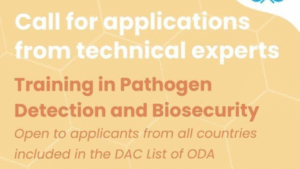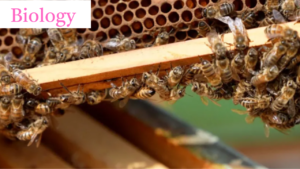Public-Private Partnerships (PPPs) are often described as a “game changer” for agriculture – but how do we move beyond buzzwords to create real, lasting impact? The Asia-Pacific Association of Agricultural Research Institutions (APAARI) has been hosting a Community of Practice (CoP) on PPPs to tackle exactly this question. The CoP is a growing platform where researchers, policymakers, private sector leaders, and innovators exchange insights and co-create solutions to strengthen agrifood systems.
The 6th session of this CoP was a dynamic dialogue, turning what could have been a routine webinar into a conversation full of hard questions, practical examples, and moments of inspiration.
Setting the Scene – Building a Culture of Trust
The session kicked off with Darshika welcoming participants and recapping the previous discussion. The three pillars from the last CoP were fresh in everyone’s minds: co-design and co-ownership, trust building, and practical models of collaboration. “Trust doesn’t come overnight,” she reminded the group – a line that would echo throughout the session.
Dr. Ravi Khetarpal, Executive Secretary of APAARI, then set the tone, reminding everyone why this CoP exists: “This is a very important Community of Practice, which we initiated a few months back.” His framing turned the focus from abstract talk to actionable collaboration, perfectly preparing the ground for the day’s keynote.
Dr. Gururaj’s Keynote – From Projects to Systems
The star of the session, Dr. Gururaj, delivered a thought-provoking presentation titled Driving Scalable Impact through Public-Private Synergy. He dismantled the idea of PPPs as mere contracts, describing them instead as “a shared journey of risk, responsibility, and reward.”
His talk highlighted four essentials for successful PPPs: – Goal Alignment – Partners must clearly agree on outcomes. – Governance Structures – Roles and risks should be transparent and fair. – Innovation Incentives – Flexible IP models are needed to encourage private participation. – Scalability – Move beyond pilots and embed solutions in systems.
He illustrated his points with examples from India’s agri-innovation ecosystem, pointing out both successes and missed opportunities where lack of trust or poor policy frameworks caused projects to stall. “Building mutual trust is not optional, it is the foundation,” he emphasized.
Murat’s Call for Regional Synergy
Adding to Dr. Gururaj’s insights, Dr. Murat brought in a regional perspective: “PPP is not just a country-level conversation. Regional value chains, shared research, and joint platforms can amplify the impact many times over.” His intervention challenged participants to think beyond national boundaries and consider collaborative platforms for sharing data, technology, and lessons learned across the Asia-Pacific region.
The Chat Explodes – Questions, Critiques, and Optimism
The session truly came alive when participants began flooding the chat with comments.
Sharad Deshpande praised the presentation but issued a reality check: “We have one Centre of Excellence under India–Israel PPP in Dharwad… It is totally abandoned and deserted. PPP is only a buzzword, not making much progress.”
Bijan Barua kept the momentum with pointed questions: “PPP synergy mostly refer in the research institution? What about scaling and market system development? Why mistrust between the organizations—where are the gaps?”
Justin Ahmed of Beanstalk AgTech brought in the perspective of startups: “From the perspective of an individual agricultural technology innovator, what proof points are most critical in garnering trust to establish public-private partnerships? How did you approach this challenge at String Bio?”
Not everyone was skeptical. Jewel Rana reminded the group why PPPs are still worth pursuing: “PPP will be a game changer in the near future. But before that, solid policy guidance and business-friendly approaches will be the key… Beyond focusing only on production, there is a lot of sector urgently need private engagement like processing, post-harvest, cold chain, agripreneurship.”
Big Picture Reflections – Trust, Pre-Competitive Research, and Finance
The discussion turned to structural issues, like mistrust between the public and private sectors. One participant noted: “As long as the public sector in India feels germplasm is safe only in their hands and sees themselves as competitors with private sector… it is difficult to build that trust.” The solution? More pre-competitive research where public and private actors work together without commercial pressure, citing CIMMYT Kenya’s MLNV disease resistance project as a model.
Manjunath TM reminded everyone that PPPs aren’t just about ideas – they are about money: “PPP is a complex issue, especially when it comes to credit and profit sharing.”
Ending on a High Note
Despite the hard questions, the session ended on an optimistic note. Amit Malaker thanked the group and stressed the need for private sector investment in cold chain infrastructure. The chat filled with appreciation, showing that participants left with fresh insights and energy.
Dr. Ravi closed by encouraging everyone to stay engaged beyond this single event: this CoP is meant to be an ongoing learning and action platform.
Why This Matters
This 6th CoP session demonstrated what PPP conversations should look like: a mix of candid critique, knowledge sharing, and forward-looking ideas. APAARI’s CoP continues to build a trusted space where diverse stakeholders can discuss, challenge, and co-create solutions for stronger agrifood systems.
Interested to be a PPP CoP member?
- Register now & be part of the discussion!
Registration form – PPP CoP
The article is written by Homaira Jahan Sonom, Agriculturist and Technical Officer, Asia-Pacific Association of Agricultural Research Institution (APAARI)








